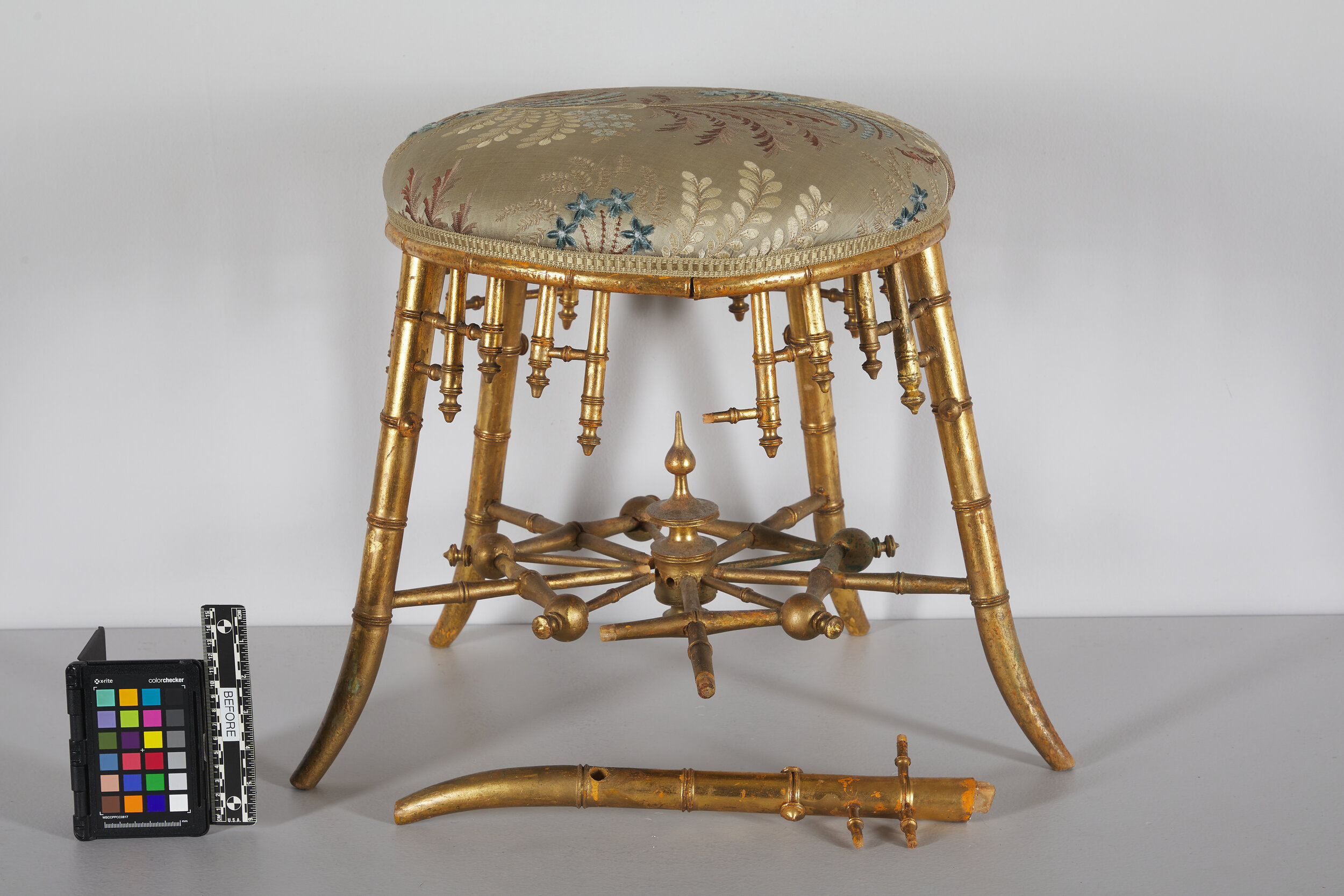Showcasing the beauty of antique furniture in your home décor can provide depth and warmth in a way that modern designs cannot match. The aged fabrics, custom finishes, fragile design details, and the maker's hand create a unique character that adds to the item's history and charm. However, age and history also require a certain level of consideration when putting antique furniture to day-to-day use. Therefore, it is essential to consider how an antique furniture item will function in your home and determine if it is stable before putting it to daily use.
Before Treatment
This Giltwood Faux Bamboo Stool is a late 19-century example of English Regency design. Regency style, also known as late Georgian, stemmed from the Romanticism of the late 18th century and was popular from the late 1700s through circa 1825. The era was known for an elegant and eclectic arrangement of styles, often featuring Egyptian or Chinese motifs and design elements. With saber-style legs flaring outward and the decorative faux bamboo details on the legs and turned stretchers, this Giltwood Stool exemplifies the Regency era.
Before Treatment- Detail
Before Treatment- Detached Leg
Unfortunately, age had also led to structural stability issues with this Regency stool. It arrived at The Center after one leg had detached entirely when the owner placed too much weight on the seat.
Before Treatment- Detail
Upon examination, Senior Conservator of Furniture Stephen Ryan determined this was not the first time the stool had undergone a repair campaign. "The joints had been re-glued during a previous repair, and that adhesive had started to fail. One of the five legs had detached, but many of the other joints were loose or separated as well." The stool's primary joinery method is mortise and tenon, where a mortise (a recess cut into a piece of wood) and a corresponding tenon (a tongue at the end of a piece of wood) are fit together snuggly and set with glue.
After Treatment- Detail
The failing glue meant that original mortise and tenon joints had come apart with minimal breakage to the wood or damage to the gilt surface. Stephen was able to reset the original joints of the decorative turned stretchers and detached leg. He then re-glued the joints using an adhesive that would appropriately fill the gaps in the mortise and tenon joints and provide greater structural stability.
After Treatment
After a light cleaning of the gilt surface, the stool returned home, back to its pride of place for our client, who will undoubtedly continue to enjoy this antique for many more years to come.







